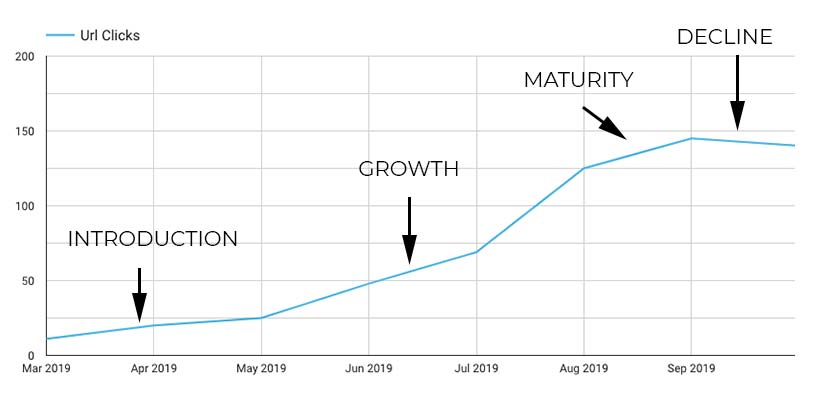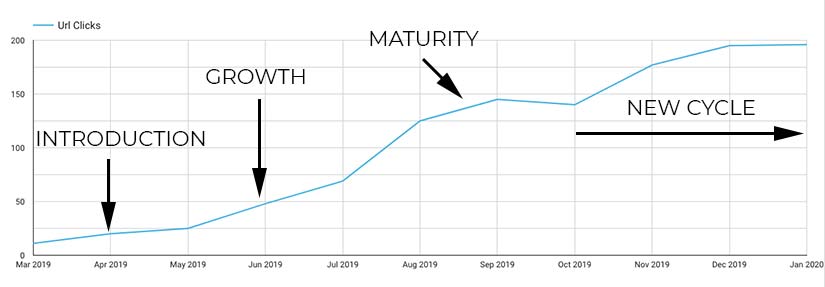When and Why you should update old content for SEO benefits

Table of Contents
Your website content is like any other product and therefore has a life cycle. At some point, your content will start generating less value for your company. By updating content, you will gain many SEO benefits, including improved rankings. But what is the ideal time to update old content?
In this article, I will help you to find old blog posts that are ready to be optimized through Google Search Console.
Why updating contents helps with SEO
The timing of refreshing content such as old blog post is irrelevant if you don’t understand the why.
A lot of people publish loads of new content and have a set and forget mentality. They would publish content and never update it again.
In some cases, this makes perfect sense. Let’s say you publish something and it completely misses the mark. The content is generating no traffic and value for your company. In this case, sometimes it’s better to accept the loss and learn from it.
However, in many cases, qualitative content produces traffic and value for your company. By refreshing old content, you can blow new life in your content that you spent hours on to produce.
The extra time investment required to update new content is often minimal and neglectable compared to the extra value it will produce.
You’ve probably heard of the notion: “Evergreen Content”. Basically, this means content that will stay relevant for a long period of time. Even evergreen content needs updating if you want to maximize impact from the content piece.
Google and other search engines have a favorable attitude towards fresher content. After all, fresh content often contains the latest facts and will often provide more information for searchers.
The SEO benefits of updating content
We can all guess some of the basic SEO benefits to refreshing content. You will get more traffic from search engines when you’ve updated content and made it more qualitatively appealing.
You will also move up in ranking on the Search Engine Results Page (SERP). Naturally, this has a clear benefit and that is more traffic. However, this is not the only benefit.
By moving up on the result pages, it’s easier for people to discover your piece of content. The extra benefit is that this will also generate you more backlinks. Even in 2020, backlinks remain key to improving your domain authority. You can check your domain authority score through Semrush.
Google made it clear that EAT is very important. For all people eating is important but Google is talking about:
- Expertise;
- Authority;
- Trustworthiness.
Improved ranking on the results page directly contributes to two factors of EAT, namely: Authority and Trustworthiness. Backlinks will result in higher domain authority, and many backlinks show Google that people trust your site. Again, you can check your domain authority score through Semrush.
My friends at the Search Engine Journey made a great article about 5 ways to improve your EAT rating.
As a growth marketer, we are often looking for quick wins that make a big impact on the overall growth of a company. Updating content is one of those low-hanging fruit strategies that will deliver guaranteed impact and result in more traffic and consequently, sales.
The Product Life Cycle
In the opening paragraph of this article, I said that content is like any other product and it has a life cycle.

Any product or content piece will go through certain stages. It starts with the introduction, followed by growth, maturity, and decline.
Ideally, you want to update your content right before it reaches the peak of the maturity stage.

This way, search engines have time to index your post and adjust your rankings. The theory is that when it reaches the peak of the maturity stage, it will start a new life cycle. The effect will be as follows:

Of course, this is a perfect scenario and in reality, you will probably only be updating your content in the decline phase. However, this is still better than not refreshing your old content at all and not have any SEO benefits.
When to update old content for SEO benefits
When you log into your Google Search Console account, you will find that blog posts or other content pieces have a very similar lifecycle.
You will see your clicks and impressions slowly increase at first, followed by a period of rapid growth. Consequently, you will reach the maturity stage followed by the decline phase.
Below is an example of data that I pulled from Google Search Console. It’s data from my post: “How to use Medium to drive Traffic to your Website”.

As you can see, the chart follows a typical life cycle and has entered the decline phase. If I did nothing, the post would continue to decline and eventually not generate much value for my website.
As you can imagine, I updated this post and added relevant content for SEO benefits. The results? The post started a new lifecycle and is showing an upward trend again.

You might wonder about how I composed the above chart. Because, if you look at Google Search Console, the raw data would look like this.

Of course, this data is hard to read and it would be hard to track a lifecycle this way. In order to make the data easier to digest, I’ve integrated Google Search Console with Google Data Studio.
In Google Data Studio, you are able to group Google Search Console data by week, month and much more.
Tracking every page of your website will be very hard and time-consuming. However, you can create reports on Google Data Studio that allow you to track your top-performing pages. By implementing this, you will be able to refresh the content on the pages that generate the most value for your company. The more popular the page, the bigger the SEO benefits will be from updating old content.
How to refresh old content
A quick note on how to update old blog posts and other content pieces. You do not need to revamp the entire post. Often times, adding new statistics or data relevant to today will work.
Create new graphics for the post and write a few additional paragraphs. You probably became more knowledgeable on the subject and Google loves expertise. See if your data sources are still correct and link to data sources that are newer.
Perhaps you’ve created a video on the matter and you can embed that video into the content. The options are limitless, but oftentimes you only need to make small qualitative updates to blow new life into an article.
As mentioned, Google loves fresh content and a quick growth hack is to change the publication date to today.
By changing the publication date of your blog, the publication date on Google will also change and it will tell people that content is fresher. This will result in more people clicking through from the search engine results page to your website. Would you click on a link that is two years old or would you prefer to click on a link that has new and relevant information?

Conclusion
By updating your content you'll get a lot of SEO benefits. Your content has a typical life cycle of any other product. It has an introduction phase, a growth phase, a maturity phase, and the decline phase.
If you update your content in the maturity phase, you can basically start a new life cycle and that means that you will avoid the decline phase. Of course, this will generate more traffic to your website and a certain piece of content will generate more value for your company.
Updating existing content requires much less effort than creating something from scratch. As a growth marketer, you need to be on a constant pursuit to find quick wins that generate a lot of value.
You don't have to update all the content on your website because you probably have loads of pages and that is not realistic.
However, you can analyze your top 50 pages on Google Search Console. By focusing on the top 50 pages, you will get the most value out of this exercise.

Share this article




Simply awesome.
As a cost and management accountant, I've some knowledge of PLC.
But, today I learned from you that it also applies to content.
Thanks for the post.
You're welcome! Glad you liked it.